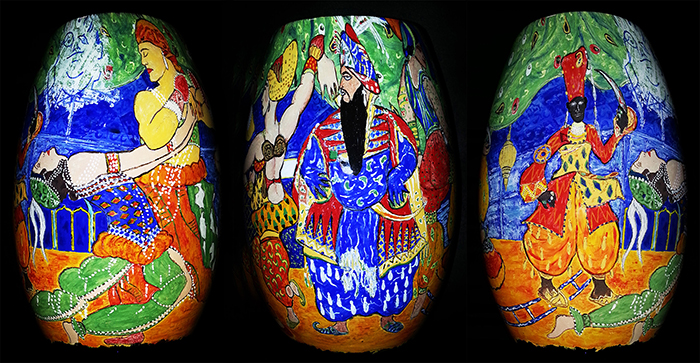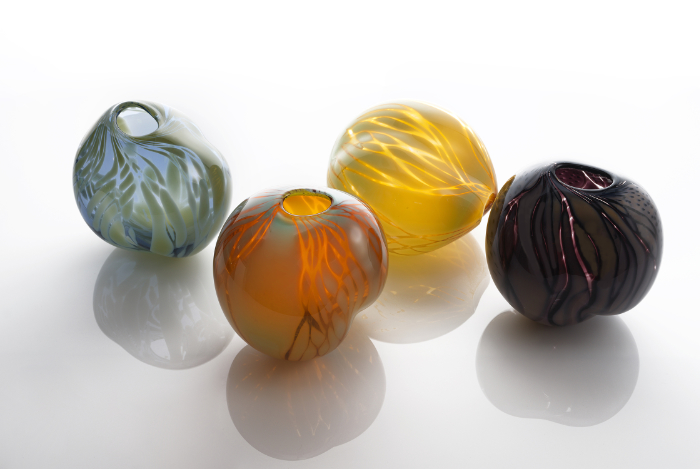
The seed of a new idea
Michele Oberdieck describes how her artistic journey took her from textiles to glass, using blowing and graal techniques to develop colour blends and fantasy plants.
As a child I was always interested in drawing, painting, and making things. I loved trying out new ideas. Both my mother and grandmother were creative – one as a maker, and the other as a painter. However, it wasn’t until I came over to the UK from Canada, I realised all the ways one could potentially express themselves using different art forms.
After doing a foundation year at Camberwell College of Art in London I ended up at Glasgow School of Art, where I studied Printed Textiles. Glasgow was an amazing city to do a BA in, with all the architecture, and bits of colour light spied when walking, such as the stained-glass windows used in the stairwells of tenement flats.
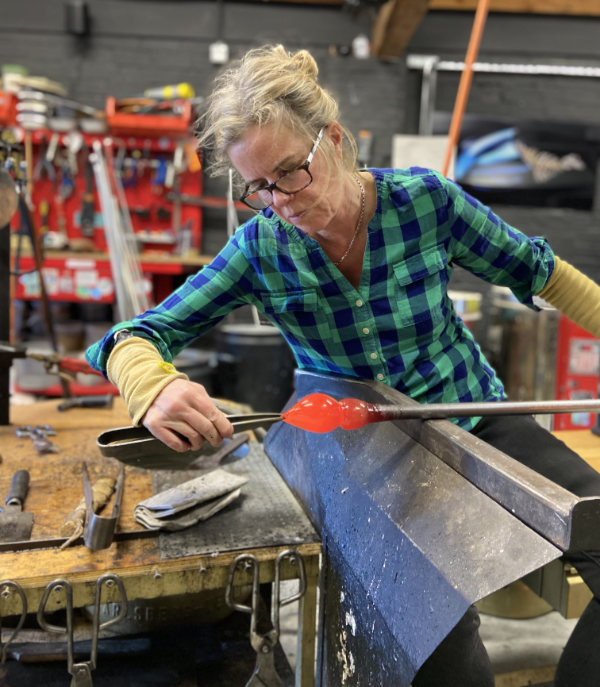
Lectures by practising artists were also insightful and informative as to how one could start practising their art, and what one could accomplish.
Quite a few people have wondered how I transitioned from textiles to glass. I used to hand dye all my silk textiles when I had my textile practice. It took me a while to consciously realise that silk and glass have similar characteristics, in their translucency and fluidity. They respond to light like no other media. Light passes through each of these materials and transforms them.
The actual shift to glass was the result of a significant commission involving the development of a new technique. While running my textile practice from the Oxo Tower in London, I was approached by a glass company who wanted to collaborate on a new idea (at that time) of fusing/laminating textiles between sheets of glass to use in buildings as feature walls in interiors.
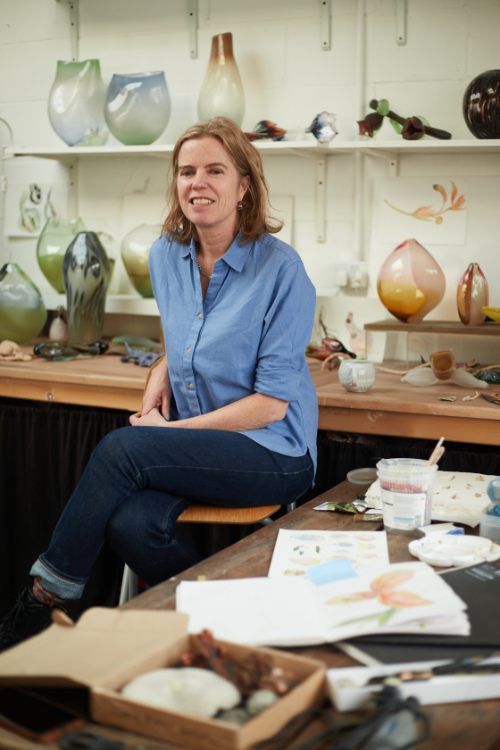
I ended up creating a new body of work, hand screen-printing my artwork on silk and linen, then laminating these pieces in sheets of toughened glass that were used in wall art, sliding doors and privacy screens.
Much later, after a decision to have a creative break from my textile practice, I applied to do an MA in Ceramics and Glass at the Royal College of Art (RCA) to study architectural glass. However, after watching the movement of colour and form evolving simultaneously in the hot shop, I was smitten with blown glass and haven’t looked back. It’s invigorating working in a new medium. Colour has always been a driving force in my work. Watching colour move in molten glass is captivating.
My MA at the RCA was less about learning skills and more about creating a visual language in it. As such, I often work with glass blowers to help interpretate my ideas.
I tend to work across three series simultaneously: colour blends, graal and Fantasy Plants.
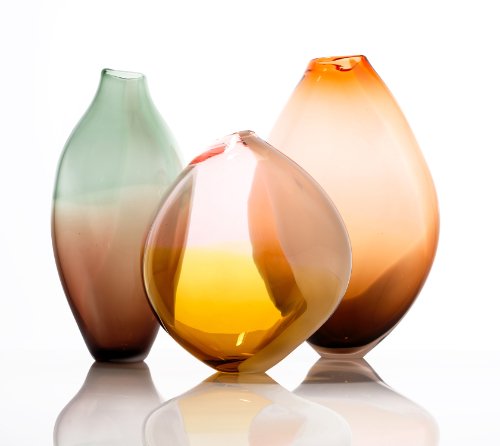
My watercolours are interpreted in blown glass form, through playing with opacity, translucency and fading. Like a pool of watery colour, molten glass responds well to colour. The fluidity and movement is enthralling. I am fascinated with the infinite number of gradations and tones when looking at a water source or the sky, or the way colours bleed and fade when nature starts to decay. Colour and form evolve together.
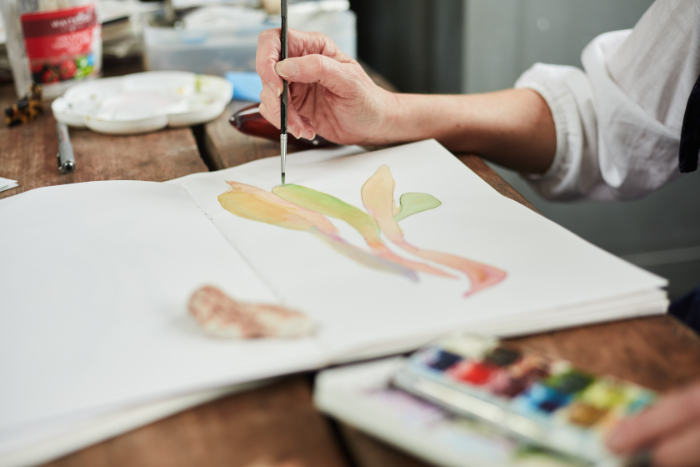
The forms interact with colour the way light reflects across the shape, illuminating it and creating another dimension. Light and glass are the perfect marriage. Light is integral to glass and has the capacity to change it both drastically and minimally.
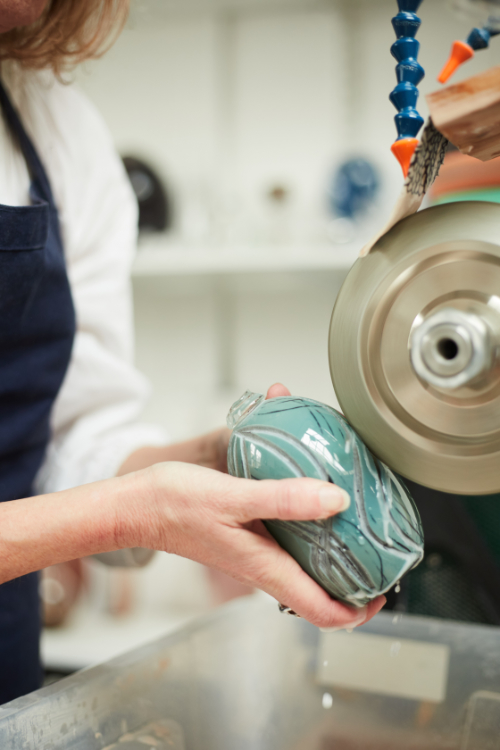
With graal technique I get to use my love of drawing by engraving patterns and mark making with diamond engraving wheels on the lathe. I enjoy stripping away the colour, revealing the translucent, clear glass and playing with the negative and positive. Glass has so many optical aspects. My aim is to allow as much light as possible into these pieces by cutting away the opaque, coloured glass, making them more fluid, light and permeable.
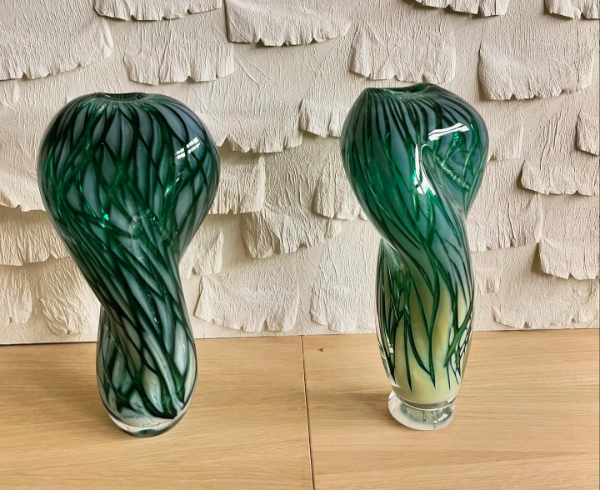
The contained, interior space is intriguing in the way that the inner reflection of light and shadow affects the exterior form, and I love the effect of light being diffused through line. Each cut-away area becomes a porthole, or viewpoint, offering up a distorted perspective as the viewer looks from the outside across the interior void through to the other side, capturing yet another detail.
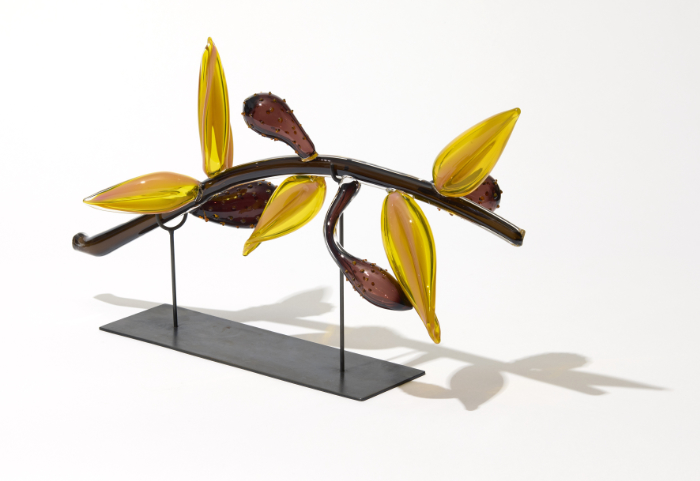
My Fantasy Plant series came about two years ago when I was selected to show at the Collect Open exhibition at Somerset House in London. This was transformative. The brief was to change direction in one’s practice by telling stories challenging material, social, political or personal perceptions. I ended up creating a completely different body of work, namely Fantasy Plants which were inspired by extinct and endangered plant species seen in the Herbarium at Kew Gardens.
All my life I have been inspired by nature and soft, organic forms. My textile prints were of botanical imagery placement printed across cloth like a kimono. My BA degree show focused on large prints of abstracted plants from studies of their shadows, in an attempt to emulate the work of Franz Kline, Robert Motherwell, and Pierre Soulages. So going back to working with imagined plants was like coming full circle.
These Fantasy Plants began as gestural sketches idealising what plants might need to survive in the future. Each process has edited-down details which are blown into glass components and applied hot to a glass core. The botanical forms start taking on animated qualities resembling insects and birds. As this series evolves, subjects such as the interdependence of species are explored visually.
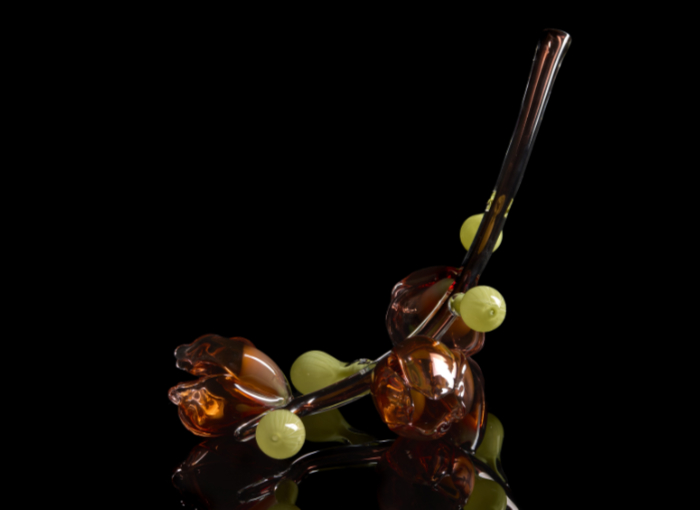
My ideas are all preplanned, drawn and painted beforehand, but I always leave room for the happy accident. Glass is such a fluid material, it keeps you on your toes, so it’s good not to be too rigid with plans. By working in this way, I am constantly designing and making new decisions on my feet as something unexpected happens. It keeps things fresh and stimulating.
I sell my work through galleries mainly, or work with interior designers. My inspiration comes from looking at the art of painters and sculptors such as Mark Rothko, Jean Arp, Henry Moore, Pierre Bonnard, Helen Frankenthaler and Emil Nolde.
Find out more about Michele Oberdieck and her varied glass work via her website.
Main feature image: ‘Four Graal Pods’ by Michele Oberdieck. Photo: Sylvain Deleu.
